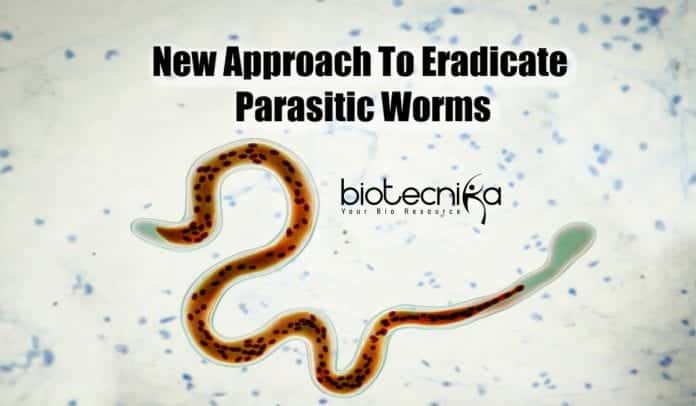Modelling Parasitic Worm Metabolism: A Way to Eradicate Parasitic Worms
According to new findings published today in Life, scientists have discovered a way to sto
p parasitic worms from using alternative metabolism pathways provided by bacteria that live within them and eradicate parasitic worms.Three potential drugs that are active against Brugia malayi (B. malayi), the parasitic worm that is a leading cause of disability in the developing world, have been identified in the study.
An estimated 40 million people in the world, with an estimated one billion people at risk, have lymphatic filariasis (elephantiatis) caused by worms such as B. malayi. A small selection of drugs are involved currently in the prevention and treatment of the disease, however, there is an emerging threat of drug resistance, and these drugs must be taken for 15 years and have limited effectiveness.
Research Associate at the Hospital for Sick Children (SickKids) in Toronto, Canada, and the lead author, David Curran said, “Using traditional antibiotics to target bacteria that live within most filarial worm has been our alternative strategy for preventing lymphatic filariasis. From the genus Wolbachia, these bacteria are known to be essential for the worms to survive and reproduce and are specific to each worm.”
Curran added saying that there remains an urgent need to identify novel targets for treatments although targeting the Wolbachia bacteria with antibiotics is a viable strategy, but, their widespread use is prevented by factors such as the longer treatment times and the unsuitability of these antibiotics for pregnant women and children.
By identifying the essential biological processes provided by the bacteria that the worm depends on, Curran and his colleagues looked at targeting both the worm and the bacteria in this study. A model of all the metabolic pathways that take place in the worm and in its resident bacteria was built in order to do this. Then, the different components of the model, such as which enzymes were activated, glucose levels, and oxygen levels, were systematically changed to see the effects on the growth of the worm. Around 1,266 metabolic reactions, which involved 1,252 metabolites and 1,011 enzymes linked to 625 genes, were included in their final model.
Throughout the different stages of the worm’s lifecycle, it adapted its use of different metabolic pathways, including those provided by the Wolbachia bacteria, in order to cope with the different nutrient conditions. The team removed some of the possible pathways from the model to see which of the metabolic reactions were critical for survival and reproduction. Around 129 metabolic reactions that slowed the growth to less than 50% of the baseline level were identified by the team, out of which, the Wolbachia bacteria provided 50 of these metabolic processes.
Using databases of existing drugs and their targets, the team searched for drugs that could block crucial molecules involved in activating these reactions, having identified these essential metabolic reactions. Three drugs were identified: tenofovir, which is approved for treating hepatitis B and HIV; MDL-29951, a treatment being tested for epilepsy and diabetes; and fosmidomycin, an antibiotic and potential antimalarial drug. The numbers of Wolbachia bacteria per worm were reduced by these drugs by 30%, 24%, and 53%, respectively.
Senior Investigator at the National Institutes of Health, Maryland, US, and the co-senior author, Elodie Ghedin explains, “The worm’s reproductive ability was found to be reduced by two of the drugs, fosmidomycin, and tenofovir. The movement in the worms also appeared to be affected by fosmidomycin.”
Associate Professor at Biochemistry & Molecular and Medical Genetics, University of Toronto, and Senior Scientist, Molecular Medicine program, SickKids, co-senior author John Parkinson concluded saying, “By affecting the metabolism of the worms themselves or their resident bacteria, all three of the drugs tested appear to act against adult B. malayi worms. This suggests that our model may yield further therapeutic targets with more research, and validates our model as a realistic construction of the metabolic processes in these debilitating parasites.”
Source
Modelling Parasitic Worm Metabolism: A Way to Eradicate Parasitic Worms






























